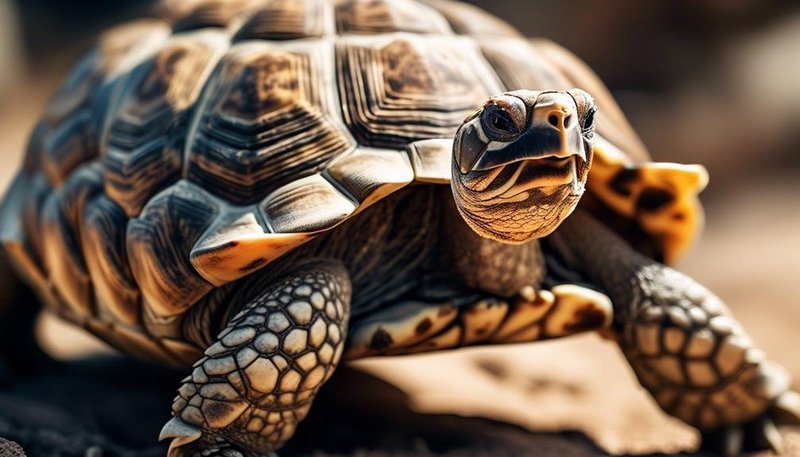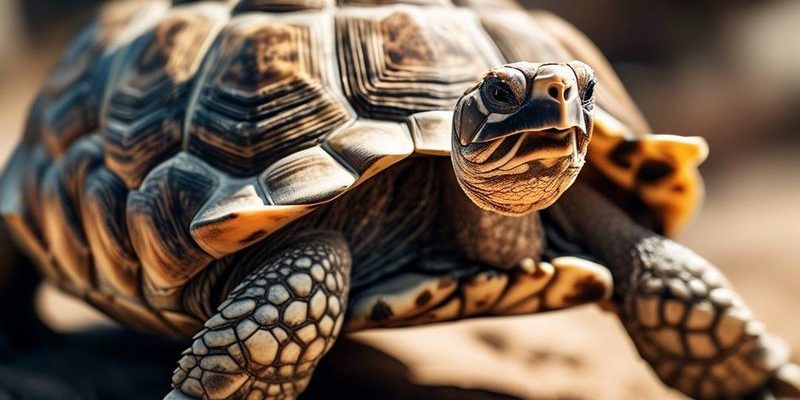
If you’ve ever considered bringing a Russian tortoise into your home, or if you’re just curious about these fascinating creatures, you’re in for a treat. This article will dive deep into the lives of Russian tortoises, exploring their habits, quirks, and the reasons why they make such captivating pets. So, let’s get started and uncover some fascinating facts about these remarkable reptiles!
1. They Have a Unique Shell Structure
You’ve probably noticed that tortoises are famous for their hard, protective shells. But did you know that the shell of a Russian tortoise is more than just a shield? It’s actually made up of two parts: the upper shell, known as the *carapace*, and the lower shell, or *plastron*. These two pieces are fused to the tortoise’s spine and ribs, offering significant protection from predators.
The shell’s design is suited to their environment, giving them a low profile that helps them hide from potential threats. Some people even say their shell looks like a medieval fortress, protecting them from dangers in the wild. The patterns and colors of their shells can also vary, making each tortoise unique, just like a fingerprint!
2. They Can Live a Long Time
If you’re thinking about adopting a Russian tortoise, you should be ready for a long-term commitment. These tortoises can live for 50 years or more! Some captive individuals have been known to reach ages over 100. Imagine having a pet that could stick around for as long as your grandkids!
Their longevity is partly due to their slow metabolism and natural instincts to conserve energy. In captivity, with proper care, they can thrive and grow even older. This is reminiscent of a family heirloom passed down through generations, and it makes for some beautiful stories to tell over the years.
3. They Have Specific Dietary Needs
One of the most critical aspects of caring for a Russian tortoise is providing the right diet. Unlike some pets, they can’t just munch on anything you throw at them. A proper diet typically includes a variety of leafy greens, flowers, and some specially formulated tortoise pellets. Think of it as crafting a gourmet salad—lots of colors and textures help keep them healthy and happy.
Avoid feeding them high-protein foods like fruits or commercial pet foods too frequently. This can lead to health issues over time, kind of like if you only ate pizza every day. Their health relies on a balanced diet, so be prepared to research what’s safe and nutritious.
4. They’re Masters of Burrowing
Russian tortoises are renowned for their burrowing abilities. In the wild, they dig deep into the ground to create burrows that provide shelter from the extreme temperatures of their habitats. Think of it as building a cozy little home underground. This instinct helps them regulate their temperature and escape predators.
In captivity, providing a substrate for them to burrow is crucial for their happiness. You might even catch them digging and rearranging their space, which can be entertaining to watch!
5. They Have a Unique Personality
One of the most delightful surprises about Russian tortoises is their charming personalities. While they may not show affection like a dog or cat, they certainly have their quirks! Some tortoises become curious about their surroundings and enjoy exploring, while others have a more laid-back attitude, preferring to bask in the sun.
You might even find that your tortoise has favorite spots in their habitat, much like how we settle into our favorite chair at home. Their behavior can be quite intriguing, leading you to observe them for hours as they wander around.
6. They Thrive in Specific Temperatures
Russian tortoises prefer a warm climate, typically around 70 to 80 degrees Fahrenheit during the day. It’s essential to replicate this environment in captivity because they are not fans of the cold. As ectothermic animals, they rely on external heat sources to maintain their body temperature.
If their habitat gets too cold, they can become lethargic, which isn’t ideal. Using a basking lamp can help create a cozy spot for them to warm up. Imagine it as your own personal sunny nook in your house—everyone loves a warm, inviting space!
7. They Are Incredibly Hardy
One of the remarkable features of Russian tortoises is their hardiness. They can handle a range of conditions that might be tough for other pets. Their natural habitat is tough, so they have adapted to survive with limited resources.
In fact, they can go for weeks without food or water, adjusting to the lack of resources. However, this doesn’t mean you should deprive them of what they need! It’s more about respecting their natural abilities. Think of it like a survivalist—you want them to have everything they need, but they also have the skills to adapt when necessary.
8. They Are Not Great Swimmers
While they might look like they belong in the water, Russian tortoises aren’t great swimmers. Unlike some other tortoise species, they can struggle if placed in deep water. They primarily live on land, so water should be used sparingly, mainly for occasional soaking to keep their skin hydrated.
This means that if you take them outside to enjoy some sunshine, make sure they’re safely away from pools or deep areas. Think of them more like celebrated land-dwellers, enjoying the great outdoors with their feet firmly planted on solid ground.
9. They Have Social Behaviors
Although they’re often solitary creatures in the wild, Russian tortoises can exhibit social behaviors when housed together. They sometimes engage in head-bobbing or gentle nudging as a way to communicate. It’s like having a little conversation, albeit without words!
However, if you plan to have more than one in a habitat, keep an eye on their interactions. Just like people, tortoises have their personalities, and not everyone will get along perfectly.
10. They Are Endangered in the Wild
Sadly, Russian tortoises are classified as vulnerable due to habitat loss and illegal pet trade. Their populations are declining, making conservation efforts crucial. Supporting wildlife organizations dedicated to protecting their habitats can help ensure these incredible creatures continue to thrive for generations to come.
As a pet owner, being aware of their endangered status can help foster a deeper appreciation for their needs and challenges. It’s like being part of a bigger story, where your small actions can contribute to a brighter future for these tortoises.
In conclusion, Russian tortoises are fascinating creatures that bring joy and wonder to anyone who takes the time to learn about them. From their unique shells to their distinct personalities, they have a lot to offer. So if you’re considering adopting one or simply want to understand them better, remember to provide a nurturing environment and appreciate their slow and steady ways. These magnificent reptiles are more than just pets—they are treasures of the natural world!

